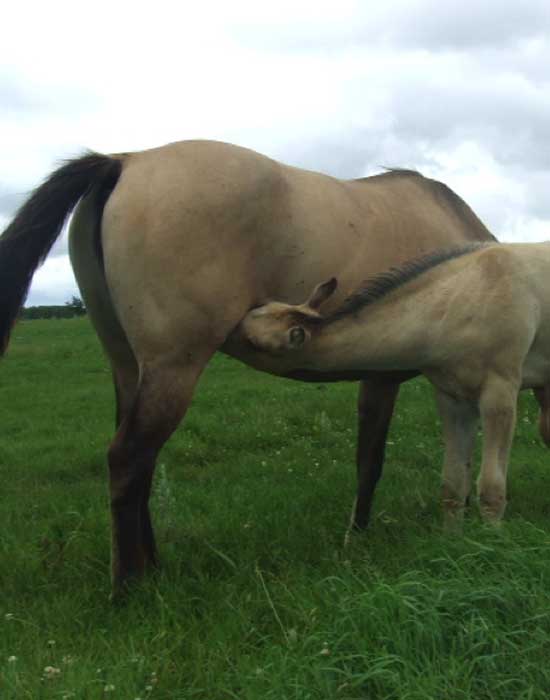
Understanding Melatonin

So we now know that reproduction in seasonal breeding animals is regulated by light. But how is the changing day length communicated to the mare’s reproductive system? The answer is via a very important hormone called melatonin. Melatonin is a protein hormone produced in the brain by the pineal gland at night and it has been given the ominous title of the ‘Hormone of Darkness’. In the horse, melatonin is produced primarily during the dark hours and is turned off when light of the correct intensity and wavelength enters the eye.
Melatonin has a very important role in the regulation of reproduction in the mare. When there is a long duration of melatonin, such as occurs during the long winter nights, melatonin prevents the release of a hormone called gonadotropin releasing hormone (GnRH). GnRH is the hormone at the top of the hormonal cascade controlling equine reproduction. As it’s name suggests, it is responsible for the release of the gonadotropins, another subset of hormones. ‘Gonadotropin’ literally means to stimulate the growth of reproductive organs. Hence, in winter there is little GnRH around as it is turned off by melatonin and the ovaries of the mare are usually small, hard and inactive.
As the seasons change from winter to spring, the days get longer and light prevents the production of melatonin by the pineal gland. GnRH levels now start to increase and this ultimately stimulates the activation of the mare’s ovaries. This occurs gradually over an 8-10 week period so that the ovaries slowly start to wake up and start developing follicles that will eventually ovulate as the season progresses.
